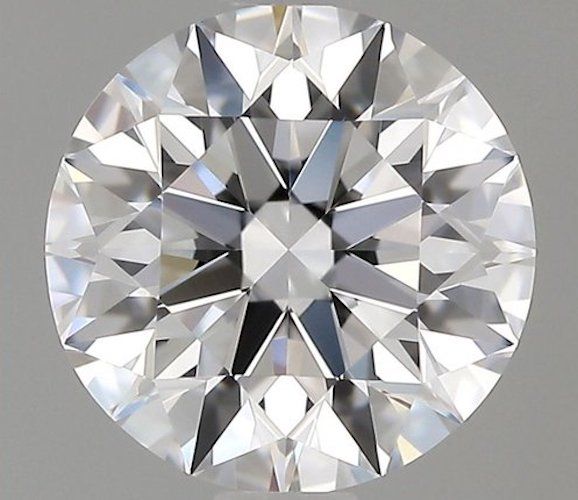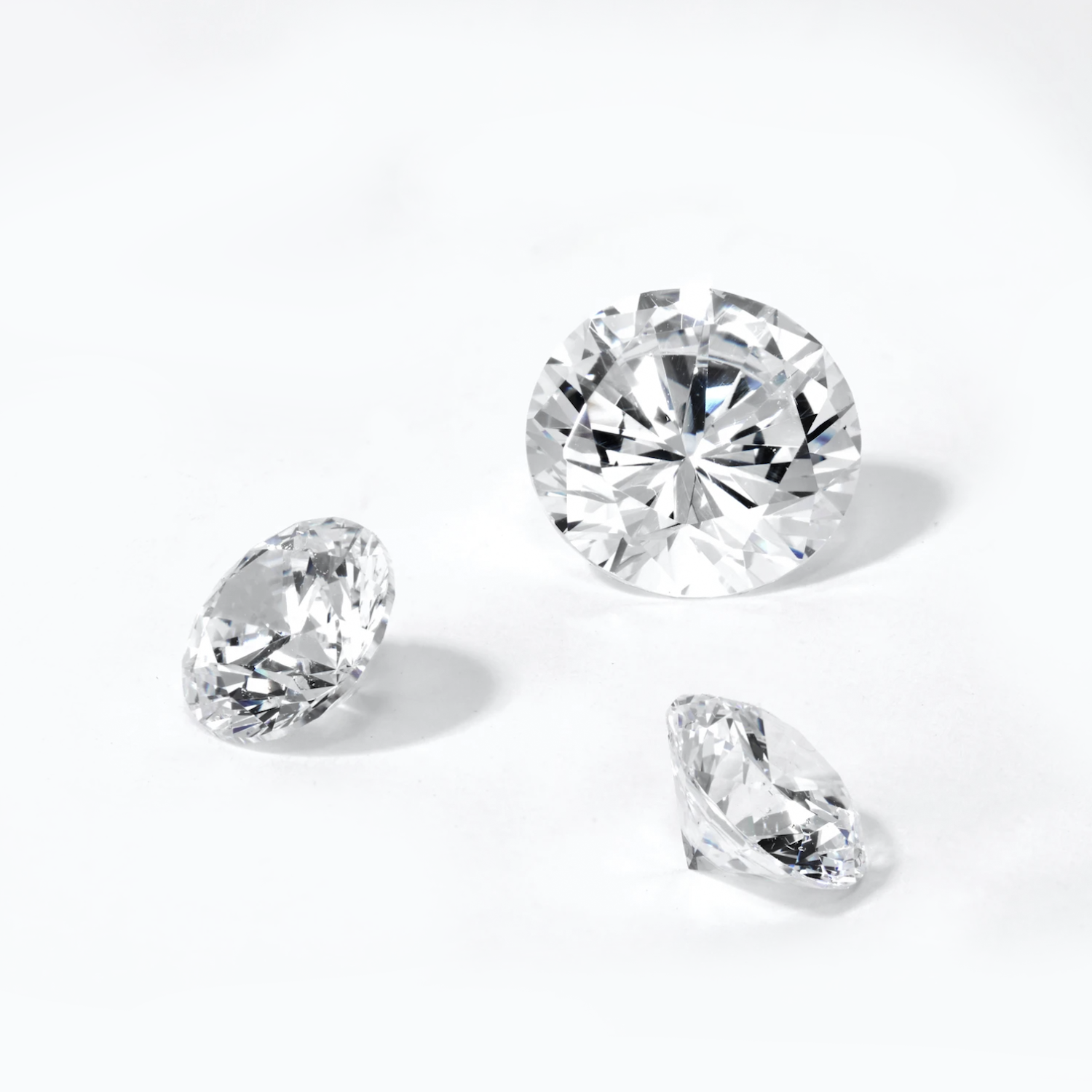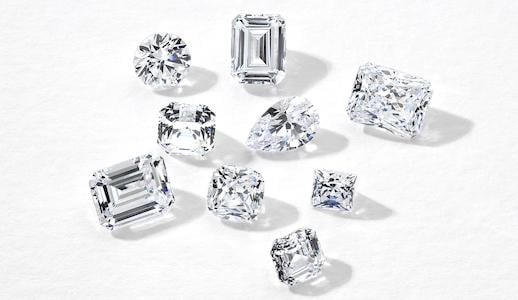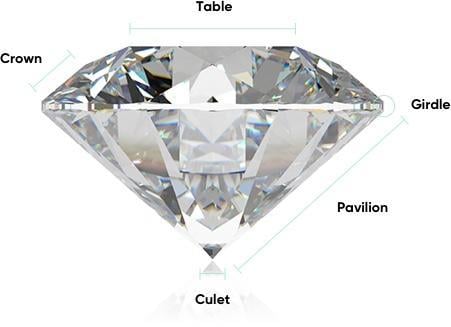D Color Diamonds: The Ultimate Buying Guide

Looking for a D-color diamond? Keep reading to learn everything you need to know about this luxurious diamond color.
What Are The 4Cs of Diamonds?
Diamonds are unique. Each gem has a specific set of features that vary in quality, which is part of what makes every diamond a one-of-a-kind. These quality traits have to be measured or specified in some way to determine the stone’s value and understand its singular characteristics.
Multiple quality systems have been used throughout history in different parts of the world. Nowadays, the 4Cs of Diamonds are the global standard. First introduced by the Gemological Institute of America (GIA) in the late 1940s, the 4Cs aim to provide a clear, objective description of a diamond’s qualities.
The 4 Cs stand for: Color, Clarity, Cut, and Carat weight.
The Diamond Color Scale
The majority of diamonds present varying degrees of yellow hints or undertones. This is a natural occurrence, and it doesn’t mean the gem is of low quality. After all, beauty is in the eye of the beholder.
The Color Scale measures the presence and intensity of yellow in diamonds. It goes from Colorless to Light Yellow, identifying twenty-three different degrees of color saturation with letters D to Z. Ritani only offers diamonds from D to L.

Grades closer to Colorless are typically more desirable. This is primarily due to rarity. Colorless diamonds are the least common, which is why they command higher prices and are perceived as better investments.
What Are D Colorless Diamonds?
As you have probably already noticed, the diamond color scale starts with the letter D. In the 1930s, when the conception of the 4Cs system was in the works, there were many different and confusing color grading systems. It was common at the time to find vague classifications that started with the letter A, such as “AAA diamonds.” Needless to say, these systems weren’t accurate and tended to be very subjective. So, to avoid any misinterpretations and distance themselves from other grading methods, GIA decided to start their own color grading scale with the letter D.
D is the highest possible color grade a diamond can earn. It is the first of the Colorless group that also includes E and F.
When a diamond is graded as a D, it means the gem has no visible presence of color—not even under magnification.
Striving for perfection and finding the best possible version of an item is exciting for most people. So the idea of buying a pure, colorless diamond is definitely seductive.
3 Reasons To Buy A D-Color Diamond
1. They Make Incredible Center Stones
It is easier to appreciate how extraordinary a crisp white diamond looks, especially when set in solitaire. Buying a D-color diamond for an engagement ring makes the most sense.
2. D Color Diamonds Are A Good Investment
Scarcity is the driving factor influencing D color diamonds’ prices. Diamonds with a D color grade are rare and will always demand a premium over other color grades.
3. They're the Best
D is the best color grade available. Show your partner how much you care by gifting them with a D-color diamond!
3 Reasons Not To Buy A D-Color Diamond
1. They're Expensive
The rarity of D-color diamonds makes them far more expensive than any other color grade. For most shoppers, a D-color grade is out of their price range. However, if you are set on purchasing a D-color diamond, look into D-color lab-grown diamonds, which are much more affordable than earth-grown diamonds.
2. They've Got Competition
Near-colorless diamonds in the G through J range will still face up as white and are much more affordable than D-color diamonds. Most of our customers choose near-colorless stones for this reason.
3. They'll Cost More to Insure
Since D-color stones are more expensive and rare, they will also be more expensive to insure. We always recommend insuring your engagement ring.
RELATED: 11 Questions About Jewelry Insurance
Buying Tips For D Colorless Diamonds
Pay Attention To These Diamond Cuts
Any diamond shape will look stunning when it is completely colorless, but D-color diamonds are especially great for step-cut diamonds, like emerald-cut or Asscher-cut diamonds. These diamonds have long, large facets, which easily reveal any inclusions or color. If you love these diamond shapes but want an icy-white diamond, a D-color emerald-cut or Asscher-cut is a great choice.
D-color diamonds look especially icy in brilliant cuts. The Round Brilliant cut is, to this day, the top-selling, most sought-after diamond shape. As its name suggests, this cut was designed to maximize brilliance. There are other shapes that follow the Brilliant canon, such as the Oval, the Marquise, and the Pear.
Read Next: What Is A Brilliant Cut Diamond?
The Best Metal Options For Your D Color Diamond
You might prefer platinum or a particular gold color for multiple reasons. Color analysis might tell you silver or golden tones suit you better, and that’s a great approach. However, when it comes to an exceptional D color diamond, white metals are the perfect match. Why? Simply because the bright, silvery shine of white gold, or platinum, compliments the white sparkle of the gem. Setting your diamond in white gold or platinum will enhance the transparency of a D-color diamond. We don't recommend setting a D-color diamond in yellow or rose gold, as a diamond will "absorb" the color surrounding it and make the stone appear less white.
D Color Diamond Engagement Rings

Setting a D-color diamond next to diamonds of lower color grades might highlight the other diamond’s yellowish hints and create imbalance. A solitaire setting will direct all the focus to the gem and avoid any color contrast. However, if you are interested in an engagement ring with diamond sidestones, contact us for a custom ring.

Raised settings are another aspect to consider. A cathedral setting, like the one seen on our Modern Solitaire Engagement Ring above, will allow more light to enter the stone, thus creating more sparkles.
D Color Earth-Grown Diamonds
Buying a natural D color diamond doesn’t have to be expensive. Remember, Color is only one of the 4Cs of Diamond. Looking for a smaller diamond (Carat) or lower Clarity grades is a smart strategy for getting a D Colorless diamond while staying within your budget. Play around with our filter options and find the best D color available for you.
Explore Our Earth-Grown D Colorless Diamonds
D Color Lab-Grown Diamonds
If sacrificing Clarity, Carats, or your favorite Cut are not an option for you, don’t worry. You can still get the perfect D Colorless diamond of your dreams. Lab-Grown diamonds cost less than their mined counterparts, and they share all the same optical and chemical characteristics as Earth-Grown diamonds. So, why not give them a try?
Find The D Color Lab-Grown Diamond Of Your Dreams
FAQs
How Much Is A Colorless Diamond?
The price of a diamond is determined by all the 4 Cs. Not every D Colorless diamond will have the same Clarity, Cut, or Carat weight, so it’s impossible to provide a specific figure or range. A D color diamond can be as economic or as expensive as the quality of its other features. Currently, a 0.50 ct, D, Round diamond can cost anywhere between $1,000 to $4,000 depending on its Cut and Clarity grades.
Are D Color Diamonds Worth It?
From an investment point of view, yes. There will always be demand for the rarest diamonds, especially the completely transparent D’s. If you are buying a D color, make sure to also invest in a higher Clarity grade. However, you can still get an equally beautiful diamond for less by choosing a near-colorless stone. We always recommend viewing a diamond as a gift or a symbol of your love over an investment.
How Do D Diamonds Compare To Other Colorless Diamonds?
D Color diamonds are fully transparent and have no presence of yellow or other colors. They are the rarest and highest color grade a diamond can get. However, for the untrained eye, it’s virtually impossible to tell the difference between a D, E, or F color diamond. And all three of these grades fall into the Colorless group. So, if you’re shopping for looks and looking to maximize your budget, it’s worth considering other color grades.


